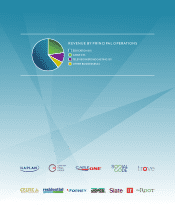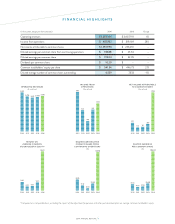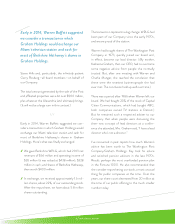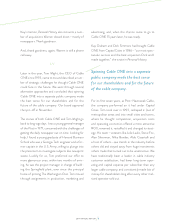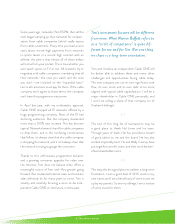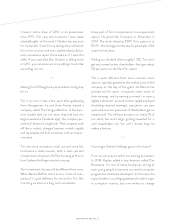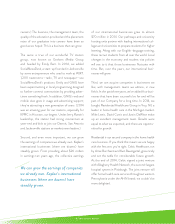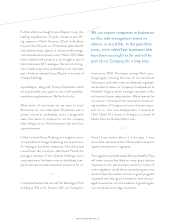Washington Post 2014 Annual Report Download - page 12
Download and view the complete annual report
Please find page 12 of the 2014 Washington Post annual report below. You can navigate through the pages in the report by either clicking on the pages listed below, or by using the keyword search tool below to find specific information within the annual report.
10 2014 ANNUAL REPORT
The gainful employment regulations will mean fewer
students, fewer degrees, much less attention to low-
income students and much less innovation.
The debate on economic inequality has highlighted
the importance of a college education. American
adults with college degrees consistently show higher
incomes and a greater likelihood of employment. No
one has said so more eloquently than the President
and the First Lady, who continue to highlight the
particular importance of college degrees to students
from the lowest income families. The President
has introduced programs to try to improve college
attendance and college graduation.
All this good work will be undone by the administra-
tion’s approach to for-profit education. Those who
wrote the regulations aimed at punishing the sector
will end up punishing the country and, in particular,
its low-income students.
Kaplan University has historically focused on non-
traditional students who are older, have been out of
school for a period and need flexibility in their pro-
grams. Typically, these are working adults who have
children and are seeking an education to climb the
economic ladder. Kaplan does a good job under-
standing and meeting the needs of these students;
our students attain a higher graduation rate than
similar students do, on average.
Our sector has its critics and some (not all) of the
criticism is deserved. Some of the criticism is silly.
Do students at for-profit colleges include a higher
percentage of those who default? Yes, but so do all
low-income college students, regardless of what
kind of college they attend. (They default more
because their families have no money so they carry
more debt.)
When our students graduate, they have a low
likelihood of default. (The default rate of Kaplan
University graduates is 4%.) They typically already
have jobs when they enroll (the average age of
KU students is 34), and they enroll in the hope of
improving their advancement prospects.
The regulation does not address how well our pro-
grams work or how much our students learn. Instead,
in hundreds of pages added to thousands of pages
of already-existing regulations, it tries to establish
ratios showing how much of a student’s income
should go to paying o student loans (no more than
8% of a student’s income or 20% of discretionary
income). You get a college education to prepare
for a career that may last a lifetime. The regulations
focus on earnings in the first few years after gradu-
ation. Our students’ average incomes, obviously, will
go down when there’s a major national recession. In
The debate on economic inequality
has highlighted the importance of a
college education. American adults
with college degrees consistently
show higher incomes and a greater
likelihood of employment.


